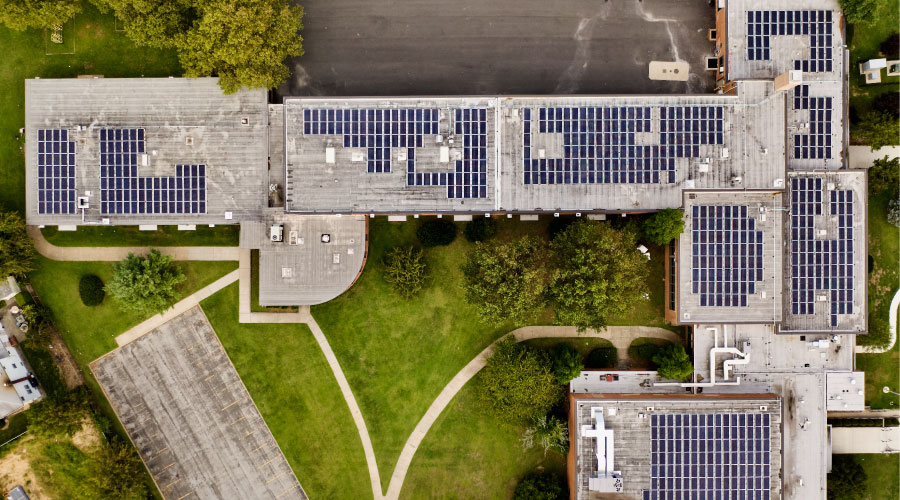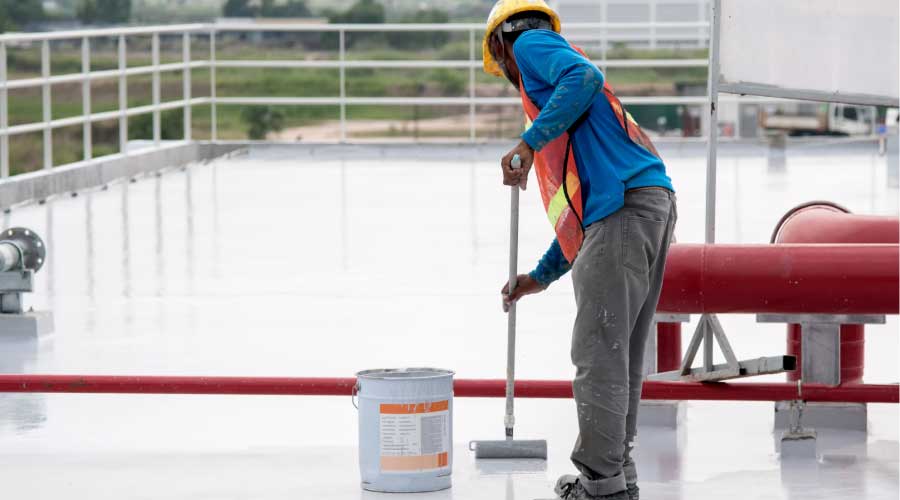How Metal Roofs Improve Energy Efficiency and Longevity
Commercial roofs need some slope built into them for building owners and facility managers to consider installing a metal roof.
A metal roof is often a personal decision made by building owners, designers or facility managers to complement the building's aesthetics. However, certain color choices can also impact building performance, according to Zabcik.
Color can be code driven by the Solar Reflectance Index (SRI), a metric used in building codes to compare the “coolness” of roof surfaces. The SRI is calculated from solar reflectance and thermal emittance values. The higher the SRI, the cooler the roof will be in the sun, Off adds.
“A light-colored roof will reflect more light and protect the building from solar heat gain, which will make it more energy efficient,” he says. “Most metal roofing can reduce energy use, as even a raw metal will reflect infrared light. Reflecting infrared radiation helps reduce solar heat gain on buildings whether the metal is coated.”
Off emphasizes that while energy savings can lead to monetary benefits, the biggest savings with a metal roof comes from fewer roof replacements.
“There will be more material costs and labor costs initially, because there is a higher level of craftsmanship involved, but you will only have to replace the roof every 50 to 100 years as compared to 20 years,” he says. “That’s where the major savings comes in.”
Zabcik underscores how often a shingled roof will need replacing throughout a span of 50 to 100 years. “You might replace a shingled roof three to five times over that life cycle,” he says. “Someone recently told me that every time you have to re-shingle a roof, the cost is double. Even if you only re-shingle that roof two times, you can see that metal becomes a much cheaper alternative.”
Plus, as companies focus more on sustainability, a metal roof is better for the planet. A large quantity of landfill space is taken up by outdated roofing materials each year, he reveals. In contrast, metal roofs are highly recycled.
“We focus a lot on carbon when we talk about sustainability,” Zabcik says. “But that’s just one piece of sustainability. When you avoid putting obsolete roofing materials into a landfill, you are making an enormous impact.”
Double-check standards
Making sure the metal panels used pass applicable standards is vital for a long-lasting roof. Building codes dictate metal roofing materials pass certain standards to ensure their structural capacity, especially with hydrokinetic roofs, according to Zabcik.
He explains a metal roof with a structural deck underneath requires the metal to meet UL 580 standards, which tests the roof’s ability to stay together under varying pressures. The TAS 125 standard also tests the metal’s structural integrity and the deck underneath it under load.
There is also the ASTM E1592 test, which puts a load on the underside of the metal panel.
“ASTM E1592 applies when there is no deck because the metal panel will take the entire load from both the wind and the pressure inside the building because it is not split with a deck,” he says. “Manufacturers spend a great deal of time and effort and money testing and producing materials to these standards. They made that investment and it's part and parcel with the long-term performance of the metal roof.”
Since the metal materials hold up best when installed to a manufacturer’s standards, Zabcik encourages building owners to select an OEM-certified contractor. “There are so many products and paint systems available, so you need to know what you are purchasing and putting on your roof,” he says. “But you also want to do your due diligence once you select a product and make sure that whoever installs it is trained and capable.”
Off also stresses the importance of hiring a skilled professional for metal roof installation.
“You want them to have at least five to 10 years of experience in metal roofing, preferably in that type of metal or metal system,” he says. “While metal roofing has historically relied more upon years of field experience, check to see if the installers are certified by the manufacturer. There are many suppliers out there who have certification requirements for installers to make sure they are doing it right.”
Ronnie Wendt is a freelance writer based in Minocqua, Wisconsin.
Related Topics:













